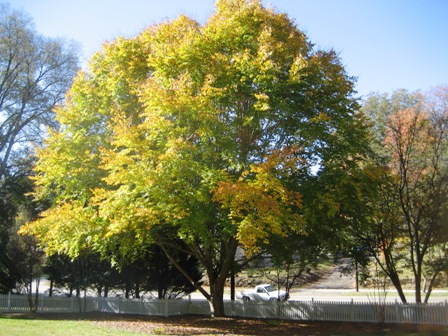
Many trees may tower above you with their thick trunks, high branches, and broad umbrella of leaves, but trees are just a special kind of plant. You can compare trees to other plants growing in a flower or vegetable garden, because they all have roots, stems, and leaves. By exploring the different parts of a tree, you can learn how trees grow to be majestic plants that are helpful for the environment.
Cambium – The cambium layer of a tree trunk grows on the outside of the xylem layer. This layer helps the tree’s roots, trunk, and branches grow thicker.
Canopy – The canopy of a tree is sometimes also called its “crown.” This part of the tree is the uppermost part, made up of branches, stems, and leaves for a deciduous tree. For evergreen trees, the canopy would include the branches, stems, and needles. Some trees have very large canopies that extend high into the air and far out from the trunk of the tree. Other tree canopies are smaller. If you stand beneath a tree on a bright, sunny day, the tree’s canopy will likely shade you from the sun. When people choose trees for a landscape, they need to consider the full grown size of a tree’s canopy to make sure the tree will fit in a growing location.
Heartwood – When the sapwood or xylem layers of a tree trunk get old and start to dry up, they become heartwood. The heartwood layer is the oldest layer of the tree. Sometimes the heartwood becomes a darker color as it gets older, so you can tell which parts of the trunk are heartwood.
Inner Bark / Phloem – The inner bark or phloem of a tree is a layer of cells with special tubes. These tubes move sap throughout the tree. The sap has important nutrients that feed the tree, produced in the leaves through photosynthesis. The roots store nutrients and when the tree needs these nutrients, they flow through the tubes in the inner bark.
Inner Wood – The inner wood part of a tree is another word for “heartwood.” The inner wood part of the tree is the center-most part of the tree trunk.
Leaves – A tree’s leaves make food for the tree. Deciduous tree leaves are flat, and they can be many different shapes. Conifer trees have needles as their leaves. Leaves convert sunlight, carbon dioxide, and water to glucose, which trees need to grow. This process is called photosynthesis.
Outer Bark / Cork Cambium – The outer bark on a tree trunk is the layer you can see and touch. Tree bark comes in different colors and textures, but the main purpose of outer bark involves protecting the tree from damage and disease. Over time, the inner bark makes new inner layers. When this happens, the inner bark works its way out toward the outer surfaces of the tree trunk, and it becomes part of the outer bark.
Roots – Tree roots grow underneath the surface of the soil. The roots help keep the tree strong and standing tall. Roots also absorb nutrients and water from the soil to nourish the tree. A tree’s root system will store nutrients until the tree needs them and then the nutrients will travel through the inner network. Some roots grow straight down into the soil, called taproots. Other roots grow out from the tree, called lateral roots. Roots have small hairs on their surfaces, which make it easier for the roots to absorb water and nutrients from the soil.
Sapwood – The sapwood layer of the trunk is the layer with the youngest parts of the trunk. Water and minerals move through the sapwood to nourish the tree leaves and stems. The sapwood can also store some nutrients for later use.
Tree Rings – Tree rings appear on the inside of a tree trunk as the tree grows. Every year a tree trunk grows by becoming taller and wider across. By looking at a cross-section of a tree trunk, you can count the rings and figure out how old a tree is.
Tree Trunk – A tree’s trunk has the job of supporting it to keep it strong. The trunk also creates a tree’s special shape. Nutrients need to travel from the leaves to the roots of a tree, and the trunk holds this important transportation network. The roots store nutrients, which flow through the network in the trunk when the tree needs them. Tree trunks have five separate layers, which each one having an important job.
